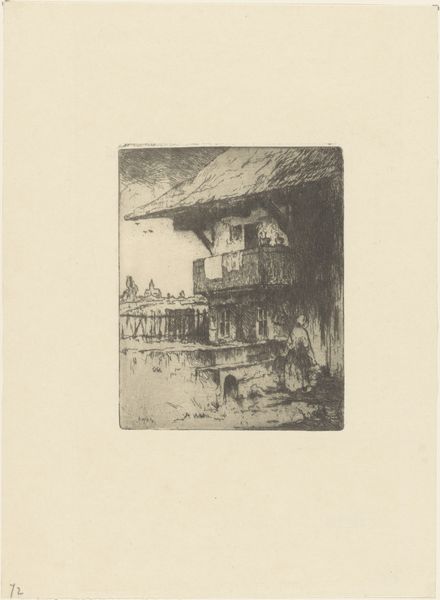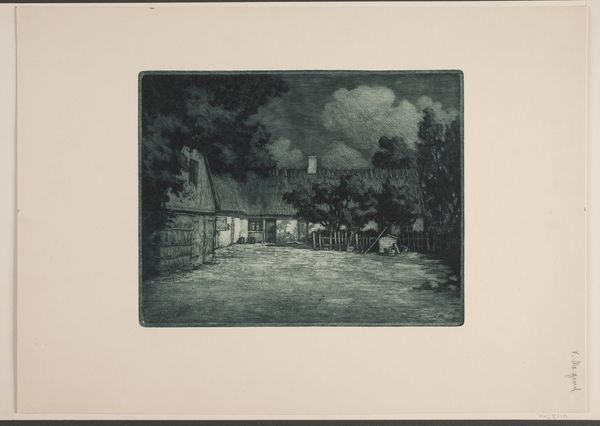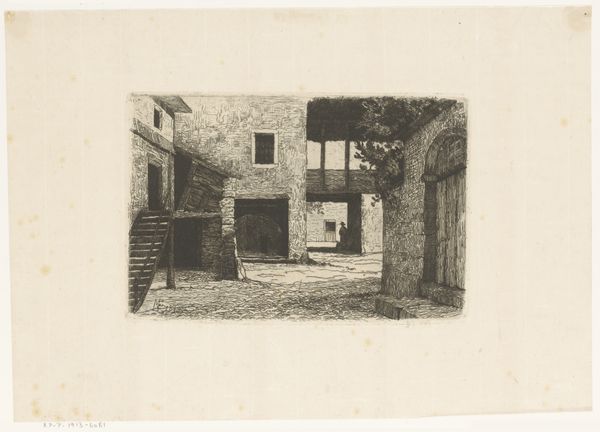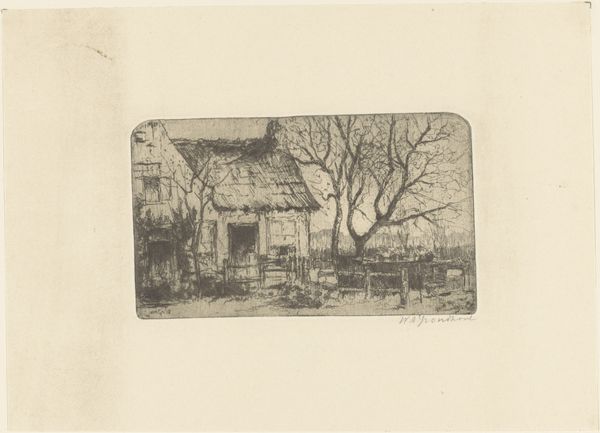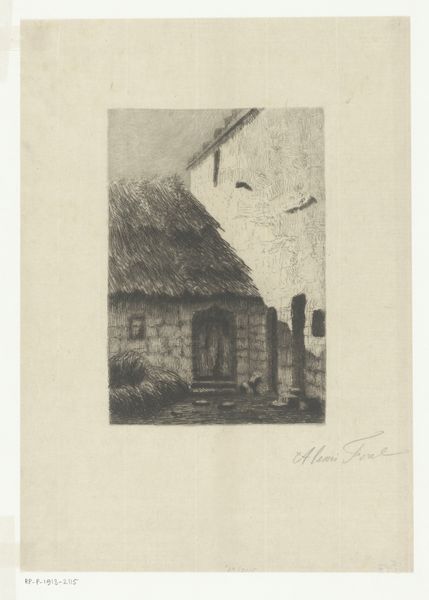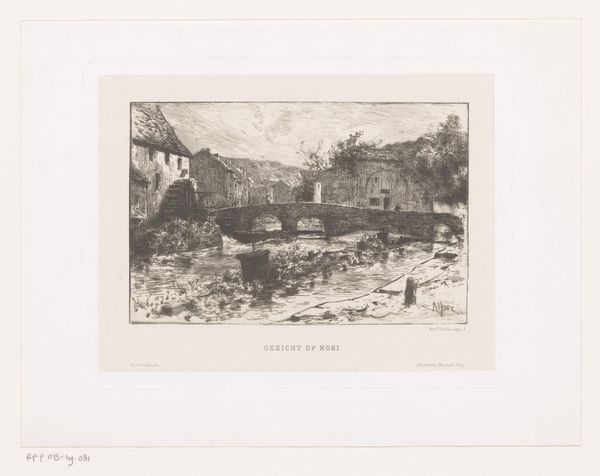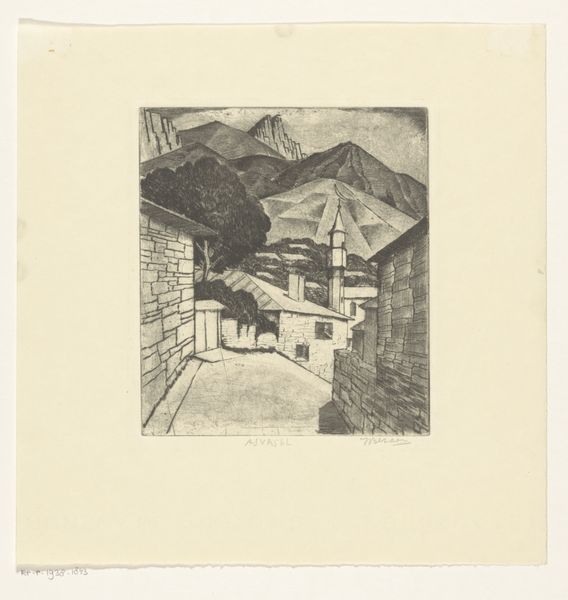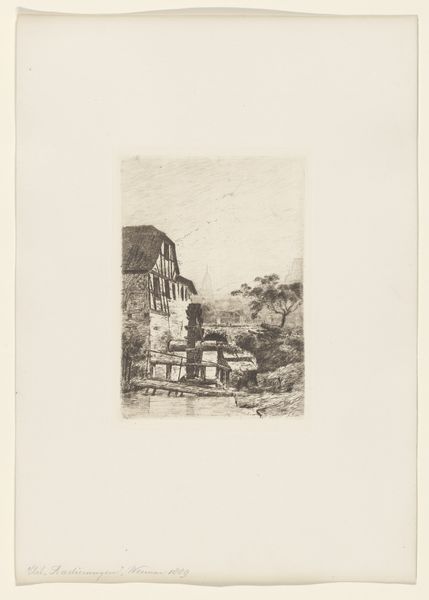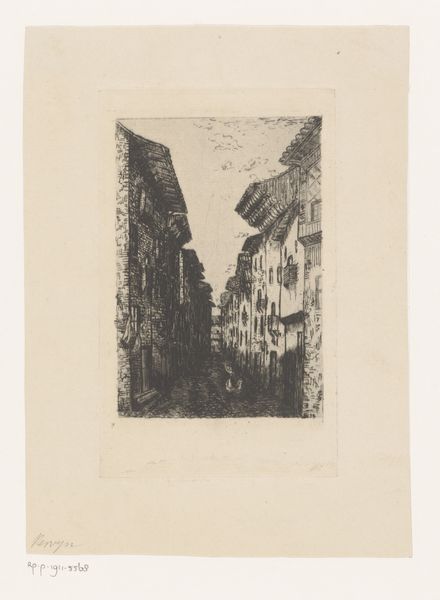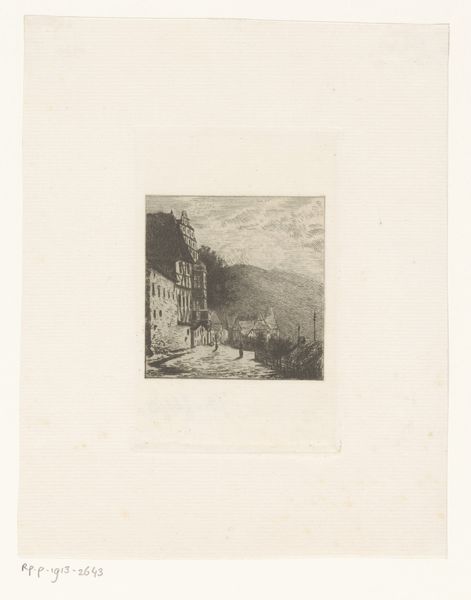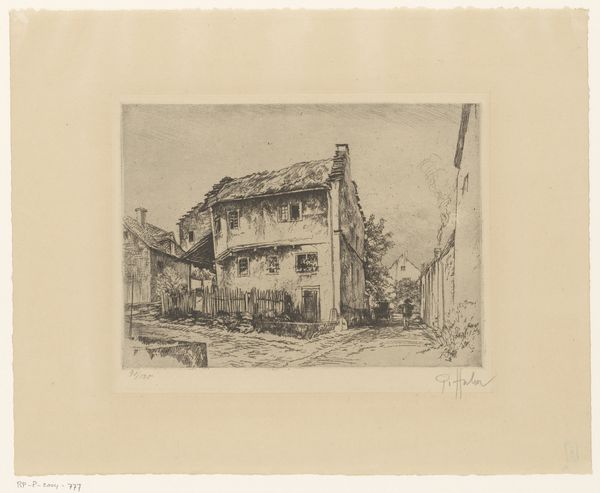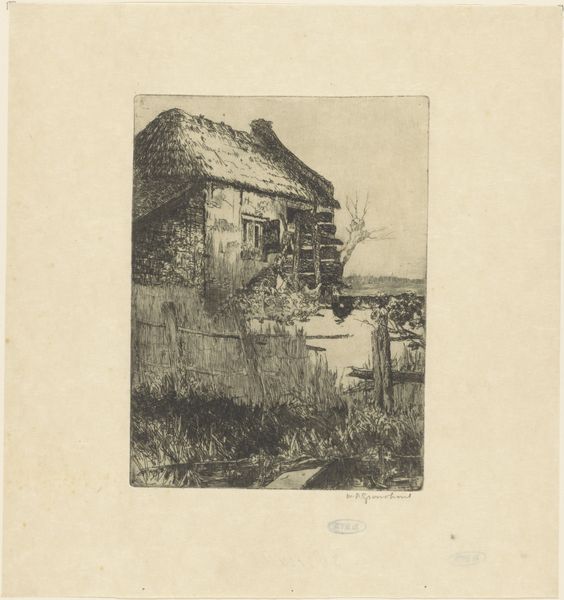
Dimensions: height 297 mm, width 395 mm
Copyright: Rijks Museum: Open Domain
Editor: Here we have Adriaan J. van 't Hoff's etching, "Florence. Ponte Vecchio," created sometime between 1903 and 1932. The texture really jumps out at me; the way the lines are etched gives everything such a gritty, almost tactile feel. What strikes you most about this print? Curator: I am interested in how the artist depicted a famous landmark, and I see beyond its aesthetic beauty. Note the material choices - etching on paper, common and relatively inexpensive. This allows for wider distribution, for the “art” to exist beyond a wealthy elite. Editor: That’s interesting. I hadn’t considered the democratic potential of printmaking. Curator: Exactly. Now consider the Ponte Vecchio itself. What was its original purpose? Was it built for artistic admiration or practical utility? Editor: As a bridge for transport, originally with shops, right? Curator: Precisely! Now think about the labor involved. From the quarrying of the stone for the bridge, to the craftsmanship in the shops built on it. This wasn't created in isolation; it’s all about the hands that shaped this scene and sustained life in Florence. How do those textures strike you differently now? Editor: It makes me see the layers of history and the everyday lives embedded in this landmark. So the materials aren’t just about the art itself, but what they represent about society and labour? Curator: Exactly. It challenges this romantic view. Editor: I will definitely think differently about how artistic choices are tied to social context, and economic production from now on. Thank you! Curator: It's been a productive discussion, looking beyond just the surface.
Comments
No comments
Be the first to comment and join the conversation on the ultimate creative platform.
